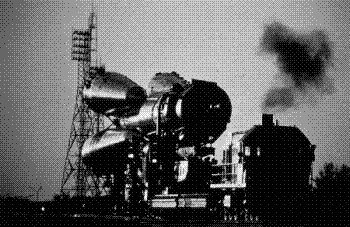
Tim Furniss/LONDON
Thirty-seven years ago, a US Lockheed U-2 spy plane was shot down for flying over the former Soviet Union's Baikonur Cosmodrome in Kazakhstan, where the Space Age began with the launch of the Sputnik 1 on 4 October, 1957. Now the Cosmodrome is going private and very public.
On 17 December, 1997, Russian president Boris Yeltsin said that the launch base, renamed the Baikonur Federal Space Centre and located near the town of Tyuratam - actually 400km (250 miles) from the city of Baikonur, will be operated by the civilian Russian Space Agency (RSA) from February.
After the collapse of the Soviet Union and after political and financial wrangling with the new independent state of Kazakhstan, Russia agreed to rent the Baikonur Cosmodrome for $115 million. The Russian military presence will be reduced, but about 750 officers will remain to support the RSA. The officers are from the Military Space Forces which, say reports from Russia, is about to be disbanded after running launches since the Sputnik. Overall, Baikonur employs more than 27,000 staff.
Yeltsin has also decreed that the RSA will administer the former "space city" of Leninsk outside the sprawling base, which houses the Baikonur personnel. Leninsk has now been confusingly renamed Baikonur Town. The launch centre will still be used for military launches.
This wind of change is an inevitable reflection of the transformation which has taken place in the former Soviet Union, and of Baikonur's growing commercial status. The Russian Proton booster, flying the flag of the Russian-US ILS International Launch Services, has already begun launching Western satellites commercially and has a full commercial orderbook to the turn of the century.
Another reflection of the policy change is an acceptance of the environmental impact of scattering spent rocket stages and polluting propellants over Baikonur's hinterland during launches. There were 18 successful launches from Baikonur in 1997 to 22 December. The Federal Baikonur Space Centre covers 6,717km2 (2,593miles2), with nine launch sites and 15 launch pads, as well as assembly buildings.
An area of 18.11 million hectares (44.7 acres) around the Baikonur launch base is under the north-easterly flightpath for falling rocket stages. Further north, metal fragments have rained from the skies. Of particular concern is the highly toxic Geptil rocket propellant, which falls in small quantities, but enough to affect the potato crop and cattle breeding. There have even been reports of babies being born with deformities. The rare failure of a Soyuz booster 6min into its flight from Baikonur in May 1996 resulted in the contamination of 60km2, and badly affected the Sary-Turgay river.
Agreements have been signed with the Republic of Altay in an attempt to reduce the environmental impact of operating Baikonur. The problem must be solved, because pressure from the international environmental lobby, thus far silent, could seriously affect Baikonur launches, and threaten its profits.
The environmental issue is also causing problems for Russia's newest launch base, at the former top-secret military-missile installation of Svobodny in the Amur region in Russia's Far East. The new launch base has performed its first satellite launch - and run into trouble.
On 4 March, 1997, a Start booster (a converted SS-25 missile) jettisoned its first and second stages over the sparse territory of the Siberian republic of Yakutia en route to orbit with its Zeya satellite. Six minutes after launch, the 3m-long empty solid-propellant second stage landed near the village of Keptin, 76km from Svobodny, between the Vilyuy and Lena rivers.
The use of this 1,143km2 area - also for jettisoning the second stage of Tsyklon boosters launched from Russia's Plesetsk Cosmodrome near the Volga, and Rokot boosters from Baikonur - had been agreed, but nonetheless the state is starting to talk of compensation.
The problem now seems to be over, because, on 12 December, a new agreement was signed between Russia and the Yakutia, which allowed the launch on 24 December of a Start 1 carrying the US Early Bird commercial remote-sensing satellite into Sun-synchronous, 493km, orbit.
Source: Flight International























